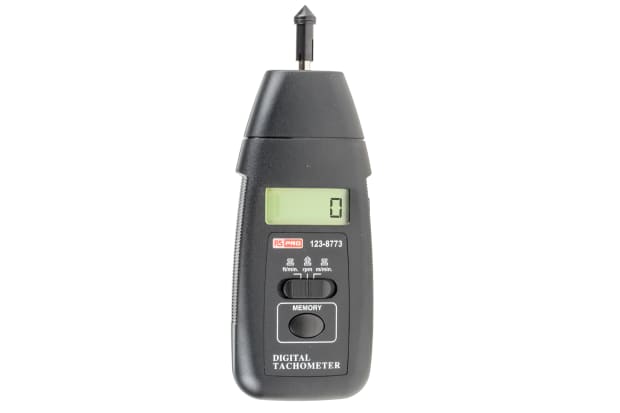Exactly How a Tachometer Assists Screen Engine Wellness and Efficiency
Exactly How a Tachometer Assists Screen Engine Wellness and Efficiency
Blog Article
Opening the Keys of Tachometers: Whatever You Required to Know Regarding This Essential Instrument in Your Car
Comprehending the intricacies of tachometers can give valuable insights into your automobile's efficiency and upkeep requirements. From measuring engine speed to deciphering the information it provides, tachometers work as an essential device for automobile proprietors and lovers alike. By unwinding the secrets behind this necessary tool, you can open a riches of information that can boost your driving experience and guarantee the durability of your automobile.
Relevance of Tachometers
The significance of tachometers hinges on their ability to supply critical real-time information about an engine's rotational rate, enabling accurate monitoring and upkeep of equipment. By gauging the transformations per minute (RPM) of an engine's crankshaft, tachometers offer valuable understandings into the engine's performance - tachometer. This information is crucial for making certain that the engine runs within its optimal array, preventing prospective damage from over-revving or underperforming
Tachometers play an important role in assisting drivers and specialists detect any type of abnormalities in the engine's speed, which might indicate issues such as gas inadequacy, mechanical issues, or extreme pressure on the engine. By quickly determining these problems with tachometer readings, maintenance can be performed proactively, protecting against expensive repair services and downtime over time.
Additionally, tachometers are especially important in high-performance lorries and equipment, where accurate control over engine rate is required for optimal procedure. Racing autos, aircraft, and commercial tools depend on tachometers to provide peak efficiency while keeping security requirements. In essence, tachometers are not just instruments for measuring speed but vital devices for making certain the smooth and efficient procedure of engines throughout various applications.
Just How Tachometers Measure Engine Rate
Making use of sensors that discover the regularity of electrical pulses produced by the engine's ignition system, tachometers properly measure the rotational speed of an engine. By monitoring the price at which these pulses are received, tachometers offer real-time responses on exactly how quickly the engine's crankshaft is revolving per minute, generally described as transformations per min (RPM)
The tachometer's sensing unit, often linked to the engine's ignition coil or ignition system wires, picks up the electrical signals produced each time a cylinder fires. These signals are after that transformed right into RPM analyses showed on the gauge or tool collection within the chauffeur's sight. Tachometers can be analog or electronic, with contemporary vehicles commonly including digital display screens for exact and rapid RPM readings.
This information is important for motorists to recognize the engine's performance, prevent over-revving, maximize equipment moving, and guarantee effective fuel consumption. By accurately measuring engine rate, tachometers play an essential duty in helping drivers operate their cars safely and effectively.
Interpreting Tachometer Analyses
Having a clear understanding of how tachometers determine engine speed sets the structure for successfully interpreting the RPM analyses displayed. Translating tachometer analyses is crucial for optimal lorry efficiency and engine health. RPM (Transformations Per Minute) readings on the tachometer indicate the speed at which the engine's crankshaft is turning. When the engine is idling, the tachometer needle generally relaxes around 600-1000 RPM, depending upon the lorry. As you speed up, the RPM will boost, showing the engine's greater rotational rate. When changing gears in a hand-operated transmission automobile, the RPM will certainly go down as you engage the clutch and adjustment equipments, after that rise once more as you accelerate in the brand-new equipment. Keeping track of the tachometer can help you identify one of the most reliable shifting points to optimize fuel economic climate and engine power. Furthermore, abnormal changes or consistently high RPM analyses might show prospective concerns with the engine that might call for expert interest. By focusing on the tachometer readings and comprehending just how to interpret them, you can ensure your vehicle runs smoothly and effectively.


Tips for Using Tachometers Properly
To enhance driving efficiency and enhance engine performance, what trick methods can be applied for properly making use of tachometers? Tachometers are vital devices that offer real-time responses on engine speed, enabling vehicle drivers to make educated choices for far better you could try these out efficiency - tachometer. Below are some suggestions for making use of tachometers effectively:
Understanding Optimum RPM Array: Acquaint on your own with the optimal RPM (Transformations Per Min) array for your automobile. This variety ranges various vehicles and is generally indicated in the owner's guidebook. Maintaining the engine within this variety can boost gas performance and lengthen the engine's life-span.
Changing Gears at the Right Time: Use the tachometer to figure out the very best time to change equipments. Upshifting prematurely or too late can cause reduced efficiency and efficiency. Goal to move equipments when the RPM gets to the ideal array for the next gear.
Keeping An Eye On Engine Tension: High RPMs for extended periods can stress the engine. Keep an eye on the tachometer to stop over-revving, particularly during velocity or when bring heavy tons.
Tachometers and Automobile Upkeep
When thinking about automobile maintenance, tachometers play a vital duty in checking engine efficiency and discovering possible concerns. Tachometers supply essential information on engine rate, allowing drivers and mechanics to make certain that the engine is operating within the recommended RPM variety. Routinely monitoring the tachometer readings can aid identify issues such as engine misfires, damaged spark plugs, or problems with the gas distribution system. By taking notice of the tachometer, drivers can prevent extreme stress on the engine, which can cause costly repairs down the line.
Along with identifying potential concerns, tachometers can also assist in maximizing gas performance. By keeping the engine speed within the optimal array, look what i found motorists can enhance their gas mileage and reduce fuel consumption. This not just benefits the chauffeur's purse yet likewise adds to environmental preservation by lowering hazardous discharges.
Verdict

Report this page